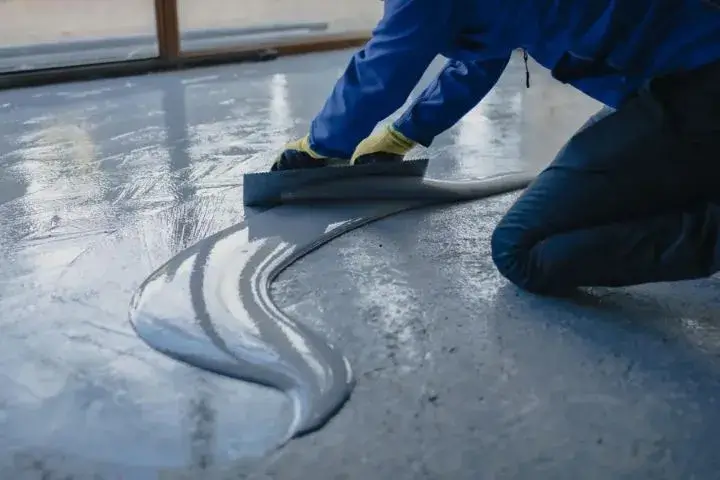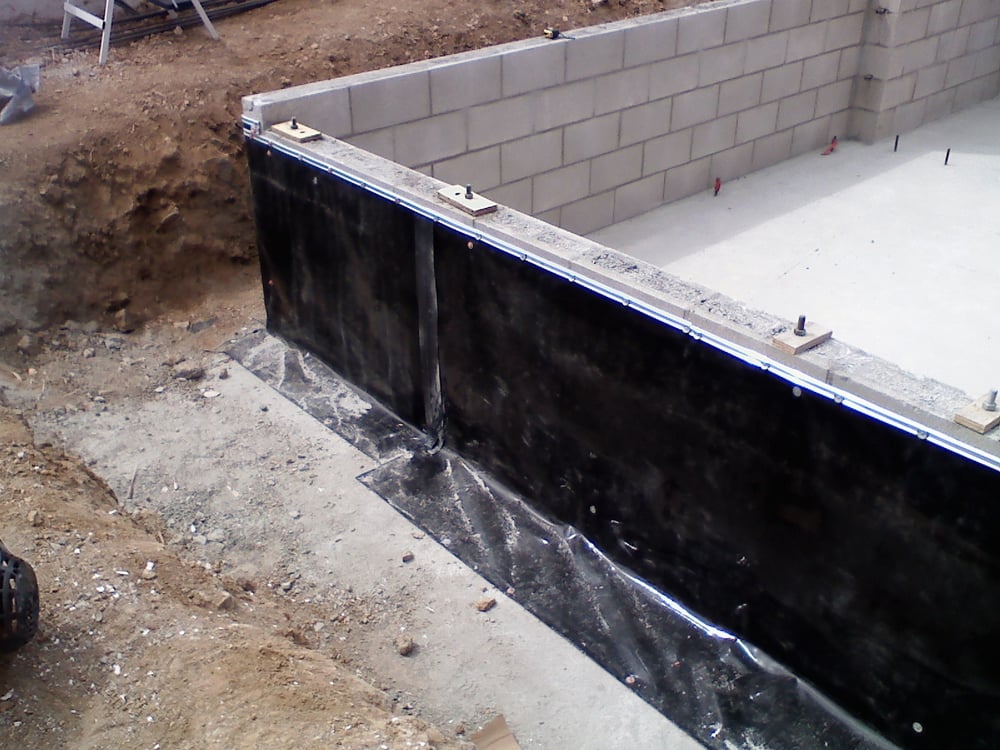How Landscape drainage Omaha Protects Your Foundation from Water Runoff
Why Waterproofing Is Important for Resilient Frameworks: a Thorough Analysis
Waterproofing plays a crucial function in the durability of structures. It works as an obstacle versus dampness, which can bring about considerable concerns like mold and mildew and degeneration. Comprehending the different waterproofing approaches and their implications is critical for homeowner. The repercussions of disregarding this facet can be serious. Exploring these aspects exposes not just the need of waterproofing, but likewise its more comprehensive impact on residential property worth and safety and security.
Recognizing Waterproofing: Meaning and Value
Waterproofing offers as an important obstacle versus wetness invasion, guarding structures from prospective damages. It includes various methods and materials created to stop water infiltration right into buildings, making certain longevity and functionality. The significance of waterproofing can not be overstated, as it safeguards against a series of problems, including mold and mildew growth, damage of materials, and architectural weakening.Effective waterproofing remedies can consist of membranes, finishes, and sealers, each tailored to certain atmospheres and architectural designs. By creating a safety layer, these options help keep a dry inside, which is essential for the wellness of residents and the conservation of building value.Moreover, buying waterproofing at the construction phase is significantly a lot more affordable than addressing water-related concerns after they emerge. Recognizing the concepts of waterproofing is crucial for designers, contractors, and building proprietors aiming for sturdy, durable frameworks that withstand the test of time and environmental difficulties.

The Influence of Water Damages on Structural Honesty
Water damages postures considerable risks to structural integrity, mainly with the growth of mold and mildew and mold. These organisms not only compromise indoor air high quality however likewise bring about product destruction over time. In addition, prolonged exposure to wetness can compromise architectural elements, enhancing the likelihood of collapse or failing.
Mold and Mildew Growth
Wetness invasion presents a considerable risk to the structural integrity of structures, causing the proliferation of mold and mildew and mold. These fungi grow in wet environments, commonly settling in concealed locations such as wall dental caries, under floor covering, and in ceilings. Their development not only creates unpleasant stains and unpleasant odors however also adds to a decline in interior air high quality, posing wellness risks to passengers. Mold and mildew can jeopardize products like wood and drywall, resulting in further moisture retention and creating a cycle of damages. Early discovery and removal are vital to stop substantial development, underscoring the necessity of efficient waterproofing procedures. Attending to moisture concerns quickly can protect both the health and wellness of citizens and the longevity of the framework.
Structural Weakening Risks
Uncontrolled wetness breach can lead to severe structural weakening, jeopardizing the integrity of buildings. Water damages often impacts fundamental parts, such as beams, columns, and wall surfaces, leading to jeopardized load-bearing ability. Prolonged exposure to dampness can trigger products like wood to rot and steel to rust, damaging their architectural buildings. This damage might lead to splits, bowing, or perhaps devastating failings if left unaddressed. Sump pump discharge drainage Omaha. In addition, water seepage can weaken the soil under foundations, creating settling or shifting that more worsens structural threats. Because of this, executing efficient waterproofing options is important in preserving a building's structural integrity, avoiding pricey repairs, and making sure security for owners. Correct upkeep and aggressive steps are necessary in minimizing these substantial dangers related to water damages
Types of Waterproofing Methods and Products
Waterproofing techniques and materials play a crucial duty in shielding frameworks from water damages. Secret strategies consist of membrane waterproofing, which provides a physical obstacle; fluid waterproofing services that develop a smooth coat; and cementitious waterproofing options recognized for their sturdiness and simplicity of application. Understanding these various methods is vital for selecting one of the most suitable method for details building needs.
Membrane Layer Waterproofing Strategies
Membrane layer waterproofing strategies are important for shielding frameworks from the destructive impacts of water infiltration. These methods entail the application of water-proof membranes that create an obstacle versus wetness. The 2 primary sorts of membrane layer systems are sheet membrane layers and liquid-applied membrane layers. Sheet membrane layers, normally made from products such as rubberized asphalt or thermoplastic, are prefabricated and can be turned out and abided by surface areas. On the other hand, liquid-applied membrane layers are used as a liquid and treatment to develop a seamless layer. Both types offer flexibility and toughness, satisfying various applications, consisting of roofing systems, basements, and foundations. Correct installment and upkeep of these membranes assure long-term security, enhancing the lifespan and honesty of the frameworks they protect.
Liquid Waterproofing Solutions
Liquid waterproofing remedies represent a functional choice to standard membrane layer systems. These options typically involve the application of liquid finishes that treat to sites create a seamless, resilient barrier against water infiltration. Various kinds of liquid waterproofing materials are available, including polyurethane, bitumen, and acrylic-based formulas. Each type uses one-of-a-kind residential or commercial properties, such as adaptability, adhesion, and UV resistance, making them suitable for varied applications. The application process usually involves spraying or rolling the fluid onto surface areas, enabling protection of complex shapes and information, which minimizes possible weak factors. Liquid waterproofing remedies are especially beneficial for areas with movement, such as joints and cracks, as they can accommodate structural changes without jeopardizing stability, ensuring lasting security for frameworks.
Cementitious Waterproofing Options
Numerous cementitious waterproofing alternatives are available, offering effective remedies for numerous construction demands. These systems have a peek at this site usually are composed of a blend of concrete, sand, and additives, making them suitable for both exterior and interior applications. Among the preferred choices are crystalline waterproofing products, which react with dampness to develop a water-proof barrier within the concrete matrix. In addition, versatile cementitious coverings give boosted flexibility, fitting minor structural motions without endangering the waterproofing honesty. It is likewise usual to use cementitious sealers for joints and cracks, making sure extensive protection against water infiltration. Generally, cementitious waterproofing alternatives are valued for their longevity, simplicity of application, and compatibility with different substratums, making them a preferred selection in modern building techniques.
Long-Term Expense Financial Savings Through Reliable Waterproofing
Purchasing effective waterproofing remedies can greatly lower lasting costs for structure owners and programmers. By protecting against water breach, these options minimize damages to structural aspects, minimizing the need for expensive repair services and maintenance with time. Waterproofing also secures indoor finishes and furnishings, minimizing replacement prices and boosting the overall life-span of the property.Moreover, efficient waterproofing can bring about energy cost savings by enhancing insulation and minimizing humidity-related issues. This results in reduced heating and air conditioning expenditures, adding to an extra sustainable monetary version for property management.Additionally, the implementation of waterproofing measures can boost property value by guaranteeing a completely dry, safe, and long lasting setting. While the initial investment in waterproofing may seem significant, the lasting monetary advantages far outweigh the ahead of time costs, making it a sensible choice for any individual involved in building or property management.

The Function of Waterproofing in Structure Codes and Laws
Waterproofing plays a substantial role in building regulations and laws, mirroring its significance in modern-day building and construction techniques. These codes are created to ensure security, sturdiness, and sustainability in buildings, emphasizing the requirement for effective waterproofing steps. Various nationwide and regional building codes describe details requirements for waterproofing materials and techniques, particularly in areas vulnerable to water intrusion, such as basements and foundations.Compliance with these laws not only safeguards frameworks from moisture-related damages yet also safeguards public health by preventing mold and mildew development and structural instability. Inspectors usually analyze waterproofing aspects during the construction procedure to assure adherence to developed requirements. As environment change enhances the frequency of extreme weather condition events, the function of waterproofing in building regulations is expected to develop, potentially resulting in more stringent regulations. On the whole, the combination of waterproofing in regulatory structures underscores its vital duty in achieving durable, resilient frameworks.
Situation Studies: Successful Waterproofing Solutions
Effective waterproofing remedies have actually been implemented across numerous projects, showcasing innovative techniques that enhance structural honesty and longevity. One notable example is the remodelling of the historic Smith Tower in Seattle, where sophisticated membrane layer systems were used to safeguard the framework from water breach. This method not just preserved the structure's visual but likewise prolonged its lifespan.In one more instance, a big business structure in Miami made use of crystalline waterproofing click this link modern technology, which responds with moisture to develop a barrier versus water. This service verified efficient versus the city's high moisture and heavy rainfall.Additionally, a bridge in San Francisco undertook a considerable waterproofing therapy utilizing epoxy coatings, which considerably reduced upkeep costs and enhanced longevity. These instance studies highlight the performance of tailored waterproofing methods in varied settings, highlighting the importance of choosing ideal approaches to resolve specific challenges and assure the long life of frameworks.
Ideal Practices for Implementing Waterproofing Techniques
Implementing reliable waterproofing strategies needs careful planning and adherence to finest methods - Water Solutions. Initially, it is crucial to carry out a comprehensive site evaluation to identify prospective areas of water ingress. This analysis notifies the option of ideal products and techniques tailored to specific environmental conditions. Using high-grade, sturdy waterproofing membranes can considerably boost protection against moisture.Additionally, appropriate installation strategies are essential; guaranteeing that surface areas are clean and devoid of contaminants advertises perfect adhesion. Routine maintenance checks must be scheduled to determine any signs of wear or damage, permitting timely repairs.Moreover, integrating drainage systems can properly take care of water runoff, stopping build-up around structures. Informing all personnel involved in building and construction about waterproofing requirements further warranties consistency and adherence to best practices. Ultimately, an aggressive approach to waterproofing can greatly prolong the life expectancy of frameworks and decrease long-term upkeep costs
Regularly Asked Questions
Just How Does Waterproofing Affect Energy Effectiveness in Buildings?
Waterproofing significantly boosts energy efficiency in structures by preventing wetness breach. This lowers the demand for cooling and heating, maintains regular indoor temperatures, and inevitably decreases power usage, adding to lasting sustainability and expense savings.
Can Waterproofing Be Applied to Existing Structures?
Waterproofing can indeed be related to existing frameworks. Various approaches, such as membranes, finishings, and sealers, make it possible for property owners to improve security against dampness, therefore extending the framework's integrity and reducing potential damage with time.
What Are the Signs of Inadequate Waterproofing?
Indicators of poor waterproofing consist of water spots on walls, mold and mildew growth, peeling paint, mildewy odors, and wetness in cellars - Sump pump discharge drainage Omaha. These indicators recommend possible structural damages and the requirement for immediate interest to stop further wear and tear
Just How Usually Should Waterproofing Be Checked or Preserved?
Waterproofing should be checked at the very least yearly, particularly in areas with hefty rains or rising and falling temperatures. Normal upkeep warranties very early detection of issues, promoting structural stability and prolonging the lifespan of the building.
Are There Eco-Friendly Waterproofing Options Available?
Green waterproofing choices are increasingly offered, using lasting materials such as bio-based polymers and natural sealants. These alternatives not only secure structures however additionally lessen ecological effect, interesting ecologically aware building contractors and homeowner.